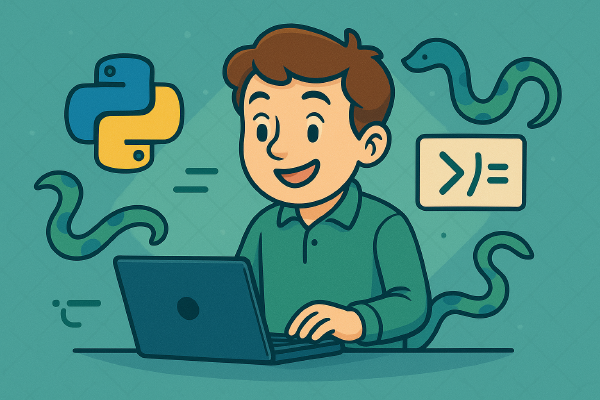This was my first time attending a Python conference, and unexpectedly, it was abroad.
Although the scale and the renown of the speakers weren’t as impressive as the upcoming PyCon Europe conference in June in the Czech Republic, it was still a great experience.
PyCon LT 2025 spans three days:
- Day One (April 22nd): Python Day (Web, Cloud, IoT, Security)
- Day Two (April 23rd): Data Day (Dataframes, Databases, Orchestration)
- Day Three (April 24th): AI and ML Day (LLM, Neural Networks)
The full schedule can be viewed here: PyCon LT 2025
First Impressions:#
I arrived at the venue just after 9 am. After scanning a QR code, a staff member gave me a badge with my name on it, and then I went to the opening ceremony.
The first presentation of the day was titled “Ethics, Privacy and a Few Other Words”. To be honest, I wasn’t very familiar with this topic. It mainly discussed ethical and privacy-related issues, and I didn’t quite understand everything. My colleague next to me, however, was listening intently and occasionally filled me in on some details. This made me realize my English shortcomings—I can understand technical content, but once the topic veers away from technology, I struggle to keep up.
The speaker was certainly outspoken; some of his opinions even made me worry about his ability to secure positions at some large companies or potential travel restrictions to certain countries.
Then came the coffee break, where everyone gathered to drink water, coffee, and eat some desserts.
Following this, multiple sessions with different topics ran concurrently in different rooms, allowing attendees to choose based on their interests.
Next, I attended a session titled “Code Review the Right Way”. This presentation didn’t delve into many technical details or tools but shared best practices for code review and how to build a code review culture. I thought it was quite good, especially the emphasis on humility, tact, and politeness when reviewing others’ code to avoid conflicts.
Then I went to another session, “What We Can Learn from Exemplary Python Documentation”. This topic aligned with something I’ve been working on recently—converting Markdown documentation in Python projects to reStructuredText and using Sphinx to generate HTML documentation.
After listening for a while, I felt the information density wasn’t very high, so I left for another session: “Using Trusted Publishing to Ansible Release”.
This was mainly because I’m familiar with Trusted Publishing and Ansible, and I wanted to see if there was anything new. The speaker was a researcher from PFS and the release manager for Ansible. However, the topic wasn’t particularly novel; perhaps because I already use these tools. She demonstrated a demo of releasing a Python package to PyPI via GitHub using Trusted Publishing—nothing groundbreaking.
By 12:30 pm, the session ended, just in time for lunch. Lunch was included in the conference; the organizers apparently booked a restaurant in the venue. Attendees could order from self-service kiosks, just like at McDonald’s or KFC. Nobody stopped you from ordering multiple meals; the kiosks were there for everyone’s use.
After lunch, the next session started at 2 pm. With some time to kill, a colleague and I participated in a stamp-collecting activity.
The organizers and sponsors had set up some mini-games, such as Snake, and other small activities, allowing participants to collect stamps. You also needed to take photos with speakers to get specific stamps.
I eventually collected four stamps, which qualified me for a spin of the prize wheel. I spun twice: the first time I won “another spin”, and the second time I won a PyCon T-shirt, much to the envy of my colleagues.
The first afternoon session I attended was “Python Containers: Best Practices”. It was well-presented, but I already knew most of the content because I’d previously written an article on Docker container best practices. It felt like I could have skipped it.
Next, I attended a session called “Do Repeat Yourself”. This one was a bit misleading by the title, but the speaker had clearly put a lot of effort into the preparation. Instead of using a PPT, he created a website using FastAPI + CSS + HTML for his presentation, complete with music. It was very well-done and quite cool. Although the technical content wasn’t new, it showed me that there are other ways to deliver a presentation besides PPT, inspiring me to try building a web app using FastAPI.
Following this was “Coding Aesthetics: PEP 8, Existing Conventions, and Beyond”, mainly about Linters, Pythonic principles, etc.—things I’m already quite familiar with, so I won’t elaborate.
Then came the afternoon coffee break, where I chatted with my colleagues about the sessions they’d attended. I was also randomly interviewed by an organizer, so I might appear in a future video.
The final session was “Skip the Design Patterns: Architecting with Nouns and Verbs”. The speaker was a “heavyweight” guest, appearing to be in his fifties or sixties, and many people in the audience seemed to know him.
The speaker’s main point was that Python programmers rarely spend time considering design patterns and why design patterns seem less relevant in Python. He walked the audience through refactoring a Python project, highlighting three different ways of thinking and explaining how to apply them to architecture.
That’s my “daily log” from the first day of PyCon.
Hopefully, tomorrow’s Data Day will offer even more learning opportunities. See you tomorrow!
Please indicate the author and source when reprinting this article. Do not use it for any commercial purposes. Follow the WeChat public account “DevOps攻城狮”.






